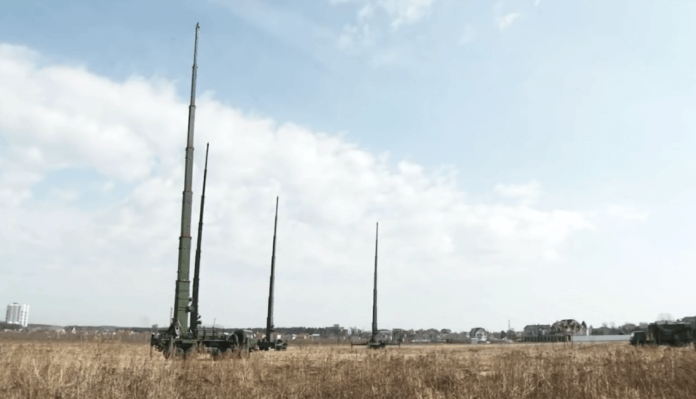
A new academic article offers a thought-provoking view of Russian aerospace doctrine, raising questions about the country’s offensive use of electronic warfare.
The article, entitled ‘Moscow’s Aerospace Theory of Victory: What the West is getting wrong’ was penned by Professor Dmitry Adamsky, of IDC Herzliya University’s school of government, diplomacy and strategy and published in the November 2020 edition of the Russian Analytical Digest.
His article offers a bold assertion that “the (Anti-Access/Area Denial) euphemism is non-existent in Russian military theory and practice, and that the accompanying Western conventional wisdom about Russian aerospace power and its political implications are flawed.” He argues that the offensive elements of Russian airpower, notably long-range and tactical strike, are integral to Russia’s air defence posture as opposed to separate from it.
This makes sense. North Atlantic Treaty Organisation (NATO) airpower doctrine puts a heavy emphasis on the Offensive Counter-Air (OCA) mission. This focuses on attacking all elements of a hostile air force including its fighters, airbases, integrated air defence systems and supporting infrastructure to name just three. Such an approach is integral to establishing air superiority and eventually air supremacy. OCA was arguably best exemplified by US and Coalition airpower during the opening stages of Operation Desert Storm in 1991. Iraqi airpower was attritted to the extent that the US and her allies could win and sustain air supremacy. Why the Russian Air Force would desist from not adopting a similarly offensive mindset is unclear. After all, is attack not the best form of defence?
“The Russian military sees repelling aerospace aggression as a holistic endeavour that encompasses all the strike and defensive capabilities aimed against all means of aerospace aggression, on their bases, in flight, and over the theatre of military operations,” says Prof. Adamsky. As well as achieving this goal via established kinetic means, cyber capabilities will form part of this approach as will Russia’s electronic warfare acumen.
Prof. Adamsky also emphasises that this approach to war could include the use of nuclear weapons. Citing the Russian doctrine of SORASA (Strategic Operation for Repelling Aerospace Aggression) he argues that “(a)gainst the backdrop of the questionable combat potential of the Russian military in its current shape to repulse effectively a massive NATO aerospace campaign, the military brass estimates the chances of successful execution of SORASA, if not augmented by nuclear capabilities, as low.”
Implications for NATO
Prof. Adamsky’s assertions regarding Russian aerospace doctrine has implications for NATO. For example, the electronic warfare elements of Russia’s armed forces would not solely be used defensively. There is every likelihood that electronic warfare, particularly electronic attack, would form a key part of any Russian attack into NATO territory. This might mean that the electronic attack effort would not be restricted to tactical systems providing protection for individual and small groups of aircraft. Operational-level capbilities like the KRET Murmansk-BN high frequency (three megahertz/MHz to 30MHz) Communications Intelligence (COMINT) and Communications Jamming (COMJAM) system could be brought into play. At least one Murmansk-BN system is thought to comprise each EW brigade furnishing each of Russia’s military districts. The Murmansk-BN could jam HF communications at ranges of over 540 nautical miles (1,000 kilometres). To put matters into perspective, this could enable systems deployed in northwest and western Russia to jam airborne HF communications in NATO’s northern and eastern flanks.
Russian offensive airpower would almost certainly be reinforced with kinetic attacks on NATO ground-based air surveillance radar and Airborne Early Warning (AEW) aircraft. AEW platforms could be targeted with Russian Air Force NPO Novator/Defence Research and Development Organisation KS-172 air-to-air missiles designed to target such aircraft. The KS-172 maybe capable of detecting and homing in on the S-band (2.3 gigahertz/GHz to 2.5GHz/2.7GHz to 3.7GHz) emissions routinely used by Northrop Grumman AN/APY-1/2 airborne surveillance radars equipping the Boeing E-3 Sentry series AEW aircraft used by NATO and several alliance members. Other anti-radar weapons like the Russian Air Force’s Tactical Missiles Corporation Kh-31PD air-to-surface weapons may also be deployed to target NATO ground-based air surveillance, and fire control/ground controlled interception radars.
Nuclear Options
As articulated by Prof. Adamsky, there is every indication that Russia’s SORASA doctrine will place a heavy reliance on the use of nuclear weapons. This has implications for NATO electronic warfare practitioners.
Russia’s employment of nuclear weapons in support of offensive air operations might not be solely focused on using such capabilities to inflict devastating casualties and physical damage. Nuclear weapons could be used at the start of operations to create debilitating electromagnetic inference on unshielded electronics through the transmission of the Electromagnetic Pulse (EMP) accompanying nuclear detonations.
Radars or radios not hardened against the EMP could be damaged greatly hampering NATO’s ability to respond to the offensive in a coordinated and efficient manner. A further complication for the alliance would be that the EMP could be generated with nuclear detonations high in the atmosphere or even in space. While such a tactic, which might not cause physical damage on the ground, would not justify the alliance launching a physical nuclear retaliation against Russia, it could prompt the alliance to contemplate a response in kind, having a similar effect on the Russian military’s radars and communications.
Prof. Adamsky has written a thought-provoking article. It raises interesting points not only about Russian airpower, but how Russia’s electronic warfare posture fits into this doctrine. It maybe as well for NATO to consider its own Anti-Access/Area Denial posture while it considers Russia’s.












